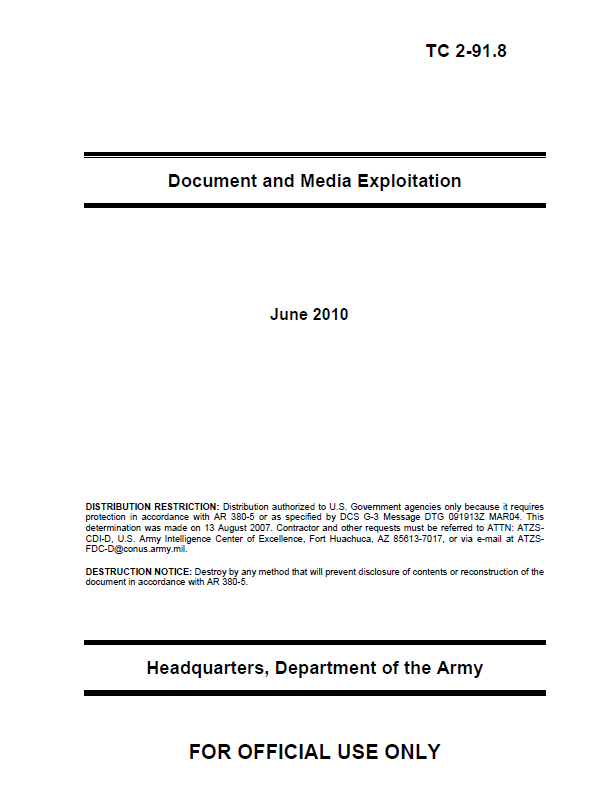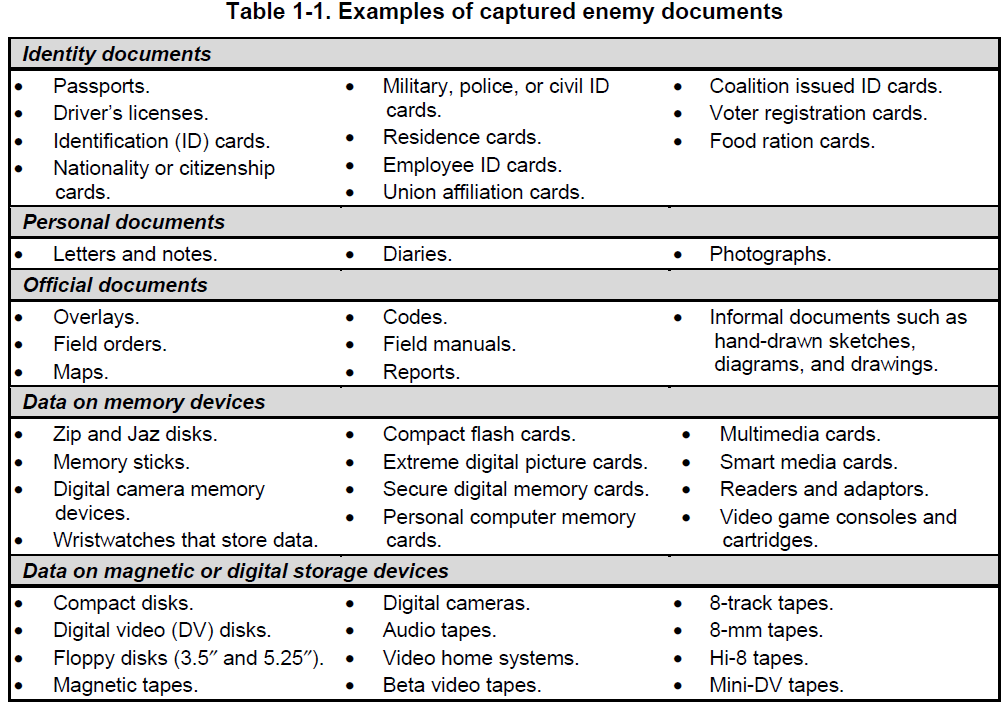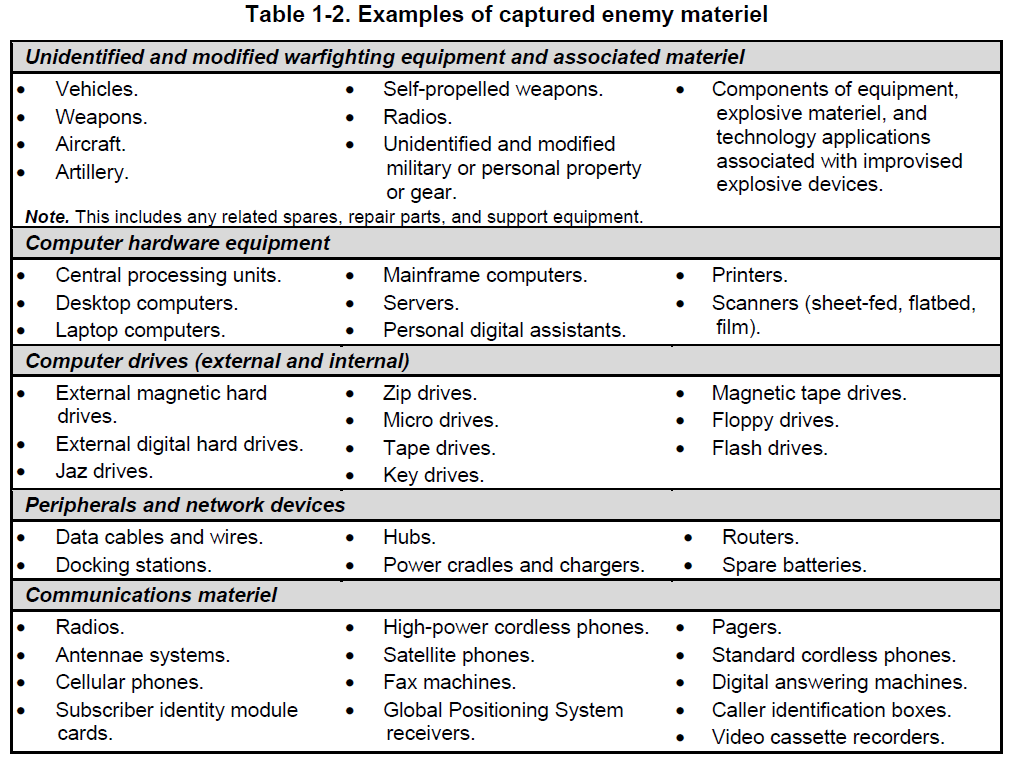TC 2-91.8 provides doctrinal guidance to Army professionals in a tactical, operational, or strategic environment who conduct and support document and media exploitation (DOMEX). TC 2-91.8—
• Can be used by leaders; planners; doctrine writers; trainers; and training, materiel, and combat
developers for addressing DOMEX-related issues.
• Informs commanders and their staffs about the mission, requirements, and capabilities of
DOMEX assets.
• Is an integral component in supporting the overseas contingency operations.
• Supports the development of training support packages; doctrine, tactics, and techniques
packages; and mobile training teams.
For purposes of this manual, captured materials include captured enemy documents and captured enemy materiel.
…
Modern military operations are conducted in complex and ever-changing operational environments. Tactical military leaders must have access to accurate and timely information when conducting operations. Tactical, operational, and strategic leaders are enabled by accurate information about enemy forces through rapid and accurate extraction, exploitation, and analysis of captured materials.
Document and media exploitation (DOMEX) is an increasingly specialized, full-time mission that requires advanced automation, communications, and analytical support, as well as expert linguists. DOMEX and translation operations were once considered human intelligence (HUMINT) processing activities, directly associated with language capabilities and extensive background knowledge in area studies. Currently, HUMINT is not the sole asset capable of conducting DOMEX operations. Personnel involved in DOMEX do not require HUMINT training to screen or translate documents. DOMEX is an Army-wide responsibility used by all military specialties.
To use DOMEX products as force multipliers, rapid exploitation of captured materials must occur at the lowest echelon. At the tactical level, DOMEX assets provide timely and accurate intelligence support to the warfighter besides the collection, analyses, rapid exploitation, and evacuation of captured materials. DOMEX assets also provide commanders with discussion ideas and feedback from higher echelon analysis operations.
The intelligence staff uses any form of communication to disseminate vital information, including DOMEX-derived information. Depending on the tactical situation, available resources, commanders’ critical information requirements, and specific information requirements, the staff disseminates critical information quickly and accurately from the lowest to the highest echelon—specifically to tactical commanders.
Commanders and staffs determine how to task-organize their intelligence, surveillance, and reconnaissance assets to accomplish the mission. For commanders’ or task requirements that cannot be fulfilled by assigned assets, units consider requesting specialized or uniquely trained units. Assigning these specialized units to the requesting organization may be the best solution, but often they are assigned to higher headquarters and attached to requesting organizations based on availability and priority.
Efficient DOMEX operations require a synchronized concept of operations. Other than in intelligence units, representation from assigned intelligence personnel generally ends at the battalion level with the battalion intelligence staff. Battalion staffs plan for the DOMEX operations of their subordinate units. They provide intelligence below the battalion level by task-organizing intelligence personnel as company intelligence support teams, or they train company or platoon personnel in specific handling, screening, and inventorying techniques.
…



